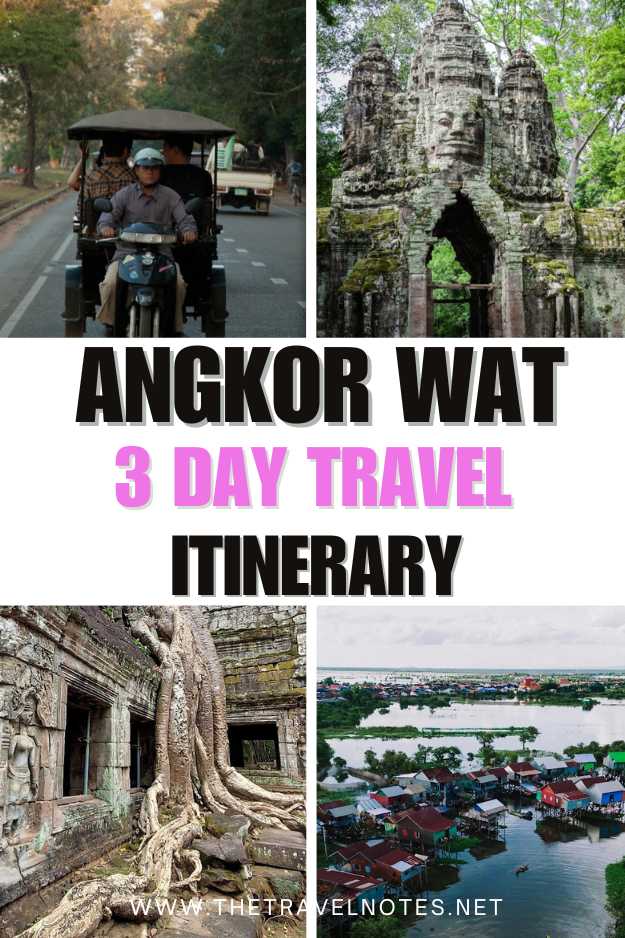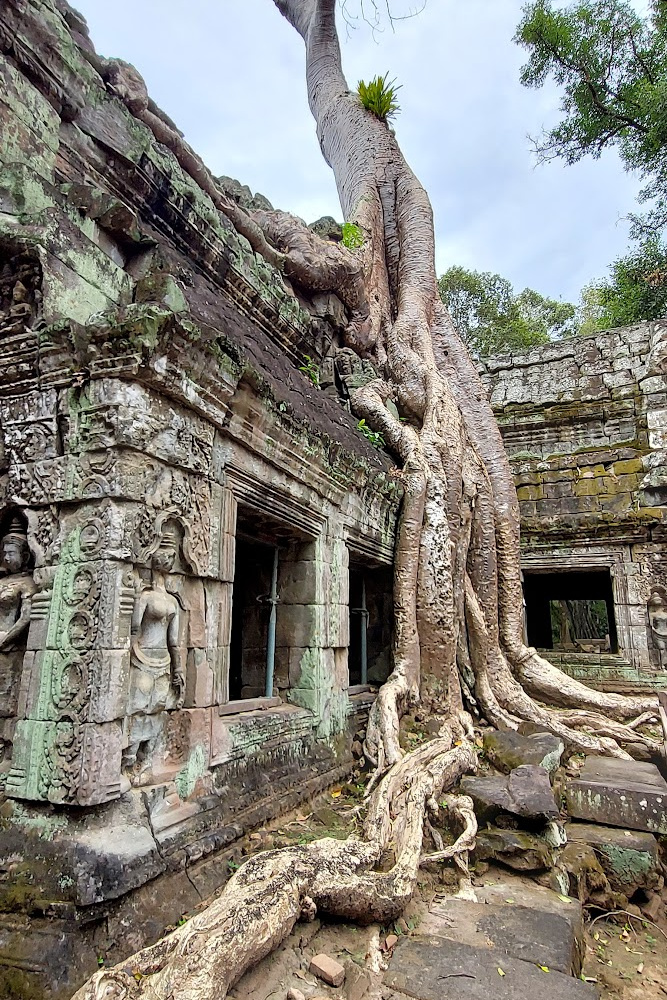This post shows you: Angkor Wat in Siem Reap: A 3-Day Travel Guide to Cambodia’s Most Famous Temples

Planning your trip to Angkor Wat in Siem Reap?
This 3-day itinerary covers Cambodia’s best temples — Angkor Wat, Bayon, Ta Prohm, and more — plus local tips, travel advice, and hidden gems.
After two visits, I created this Angkor Wat guide to mix history, culture, and relaxing moments — perfect for solo travelers, couples, or families.
Are you unsure how many days you need in Siem Reap, which temples to visit, or how to get around?
I’ve got you covered — from what to pack and where to stay, to getting your Angkor Wat pass and planning a smooth itinerary.
Angkor Wat in Siem Reap: A 3-Day Travel Guide to Cambodia’s Most Famous Temples
What Is Angkor Wat?
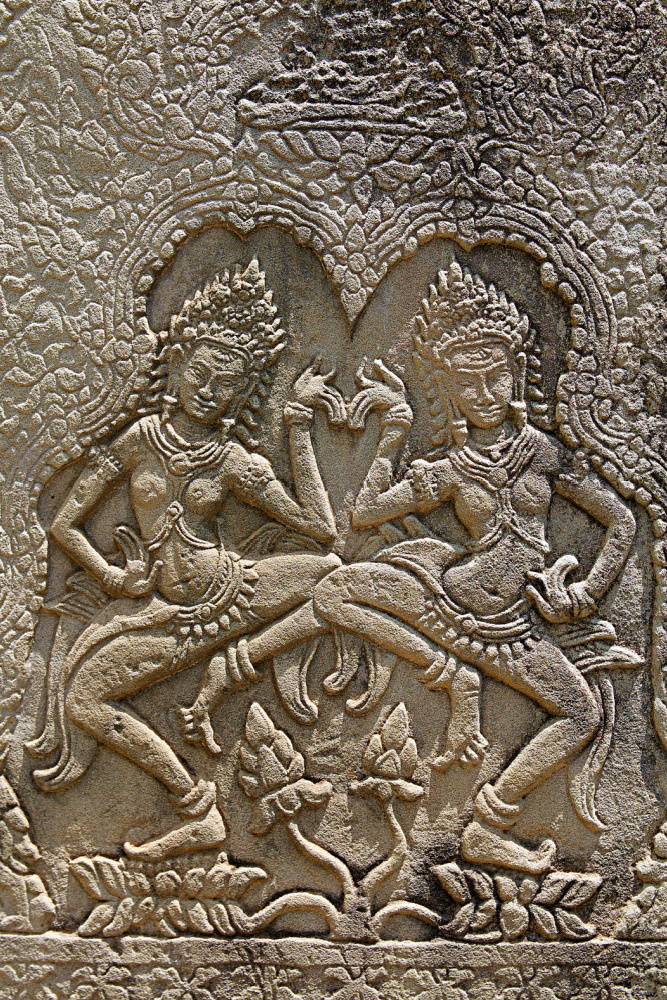
Angkor Wat is one of the most famous temples in the world. Built over 900 years ago by King Suryavarman II in Cambodia, it started as a Hindu temple and later became an important Buddhist site.
Constructed with massive sandstone blocks from Mount Kulen (50 km away), it’s a true ancient engineering marvel — canals and rafts transported stones!
Inside, you’ll see more than 3,000 Apsara carvings — celestial dancers symbolizing beauty, joy, and blessings.
Visiting Angkor Wat feels like walking through history, surrounded by sacred art and timeless legends.
Use This Mini Guide to Plan Your Angkor Wat Itinerary

After two personal trips to Cambodia, I created this real-life Angkor Wat guide to help you confidently plan your visit.
This isn’t just about which temples to see — it’s your practical companion for:
- Booking a tour or planning independently
- Applying for your Cambodia e-visa
- Picking the best places to stay in Siem Reap
- Packing smart (especially for temple dress codes!)
- Getting around the area (tuk-tuks, drivers, or private cars)
- And tips for exploring beyond Angkor
Perfect if it’s your first time in Siem Reap — and a time-saver even for repeat visitors.
How Much Does the Angkor Wat Ticket Cost?

If you’re wondering how much the Angkor Wat pass is, here’s a quick breakdown:
- 1-day pass: $37
- 3-day pass: $62
- 7-day pass: $72
I recommend the 3-day pass even if you’re visiting for two — it offers flexibility and better value.
Book directly on Angkor Enterprise’s official site to avoid scams and skip the queue.
How to Visit the Angkor Temples
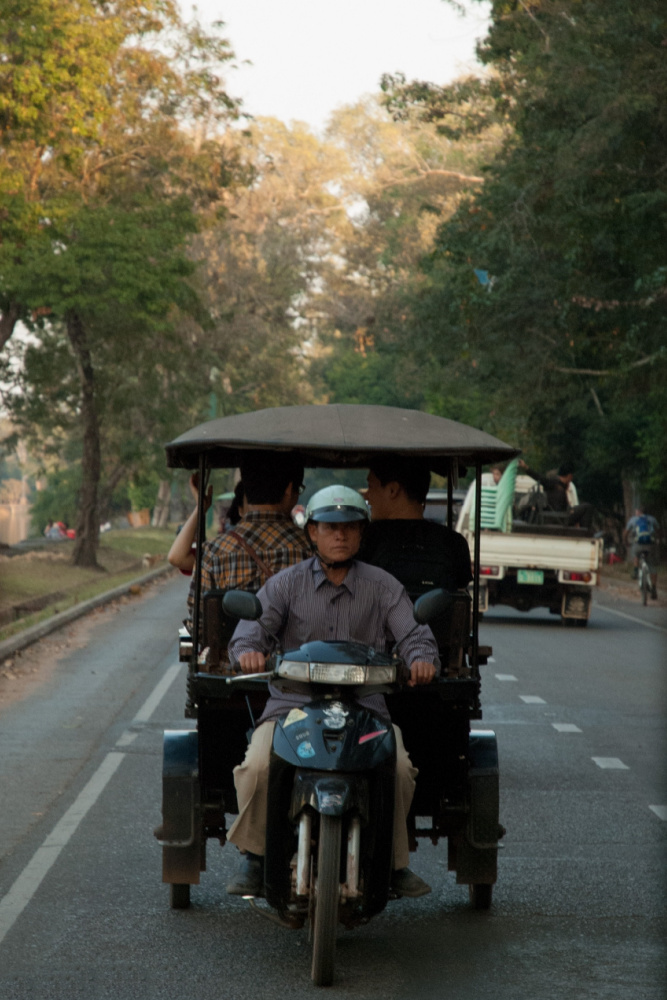
I booked a professional tour guide during my first trip, which made a huge difference.
Not only did I learn historical facts, but also personal stories that brought the temples to life.
A guide saves time, helps you navigate the massive complex, and supports local tourism. I highly recommend Happy Angkor Wat Tour — they were affordable, knowledgeable, and welcoming. Here’s the TripAdvisor link.
Day 1: Angkor Wat + Ta Prohm Temple
Morning: Angkor Wat
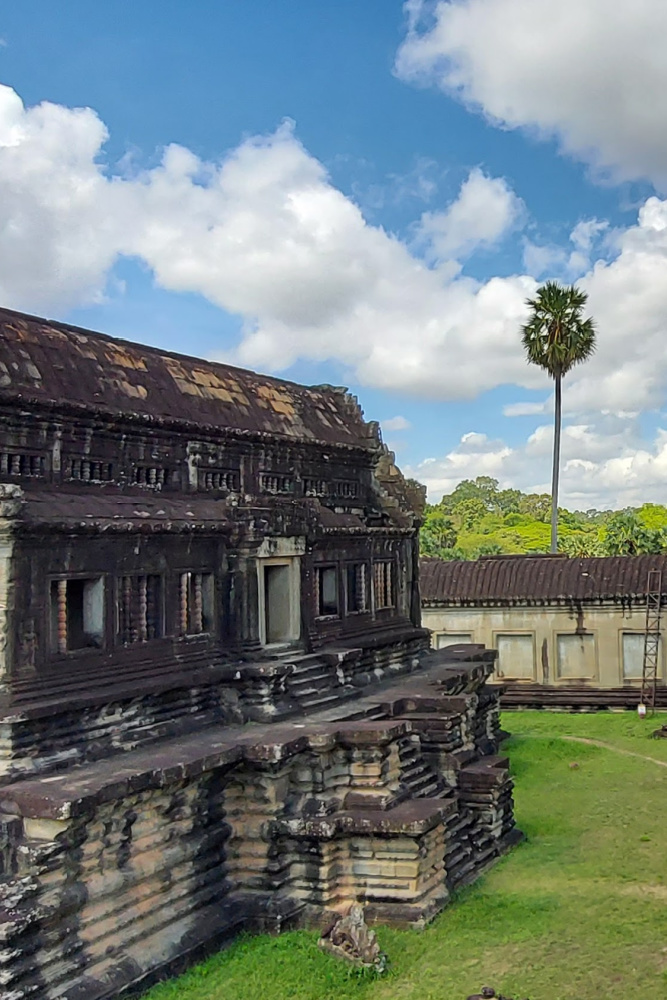
Angkor Wat is steeped in history, and having some background knowledge will significantly enhance your visit.
I recommend bringing a book or guide with insights about the temple’s history. While some ruins have small explanation boards, most do not, leaving much of the story untold.
A guidebook will help you understand the intricate carvings, hidden symbolism, and architectural wonders that define this sacred site.
Top highlights:
- Intricate carvings: Look for the detailed bas-reliefs depicting legendary scenes such as the Churning of the Ocean of Milk.
- The central tower (Bakan): Don’t miss climbing to the top for sweeping views of the complex and the surrounding jungle.
- Reflection pools: Located near the entrance, they offer the most iconic photo spot, especially at sunrise.
- The galleries: These long corridors feature beautifully carved columns and storytelling murals from ancient Khmer history.
Afternoon: Ta Prohm Temple
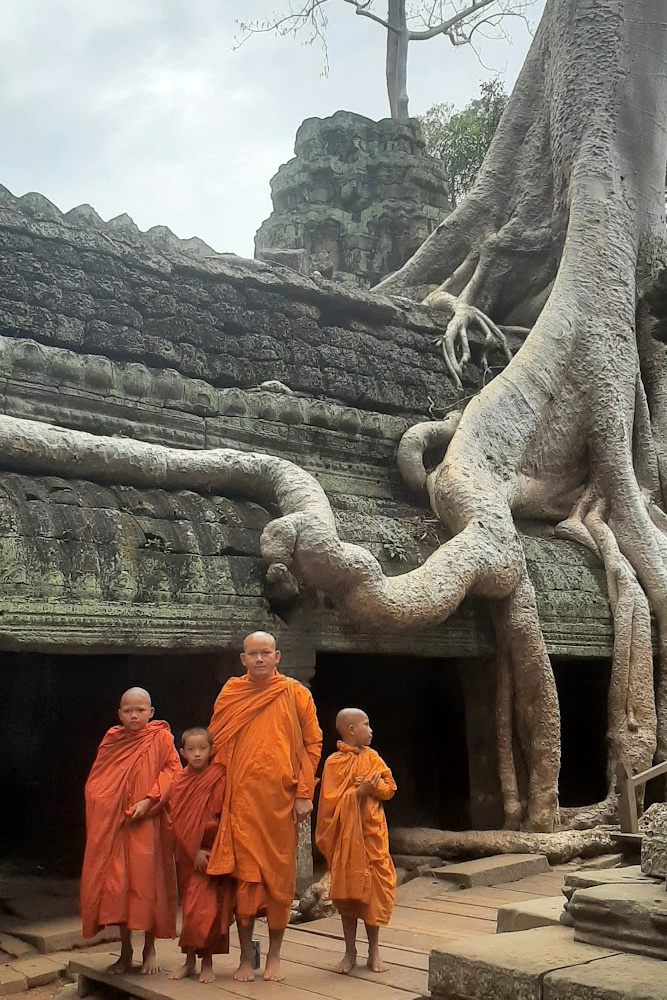
Ta Prohm is one of the most atmospheric temples in Angkor, known worldwide as the Tomb Raider temple.
Its enormous tree roots grow through crumbling ruins, creating a surreal blend of jungle and stone.
Top highlights:
- Tree roots + temple fusion: A photogenic dream
- Central sanctuary: Beautiful carvings and a mysterious vibe
- Serene paths + hidden doorways for peaceful moments
- Apsaras carved in stone, dancing eternally on the walls
It’s an unforgettable mix of nature and ancient Khmer architecture.
Evening Plan: Watch the Phare Circus
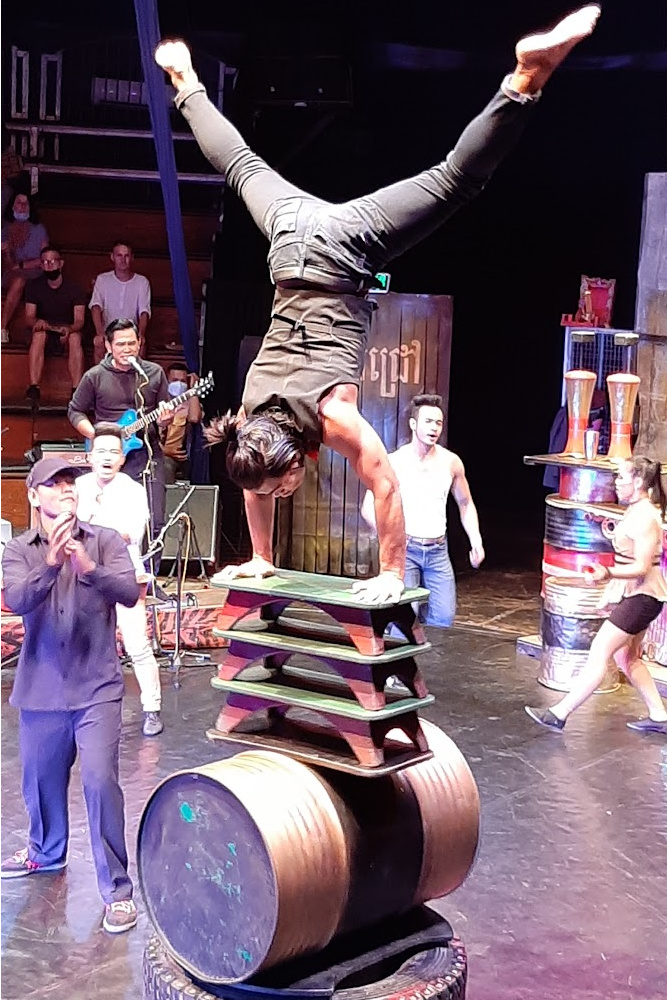
After dinner, head to Phare: The Cambodian Circus — a must-see in Siem Reap.
Run by local artists, it mixes acrobatics, theater, and music in a powerful cultural show.
- Tickets from $18 – buy in advance on their website
- Arrive early to enjoy a drink at the outdoor bar
- Sit near the fans — the tent gets warm!
It’s the perfect way to end your first day in Siem Reap — with creativity, talent, and Khmer storytelling.
Day 2: More Temples + Culture in Siem Reap
Bayon Temple – The Smiling Faces of Angkor Thom
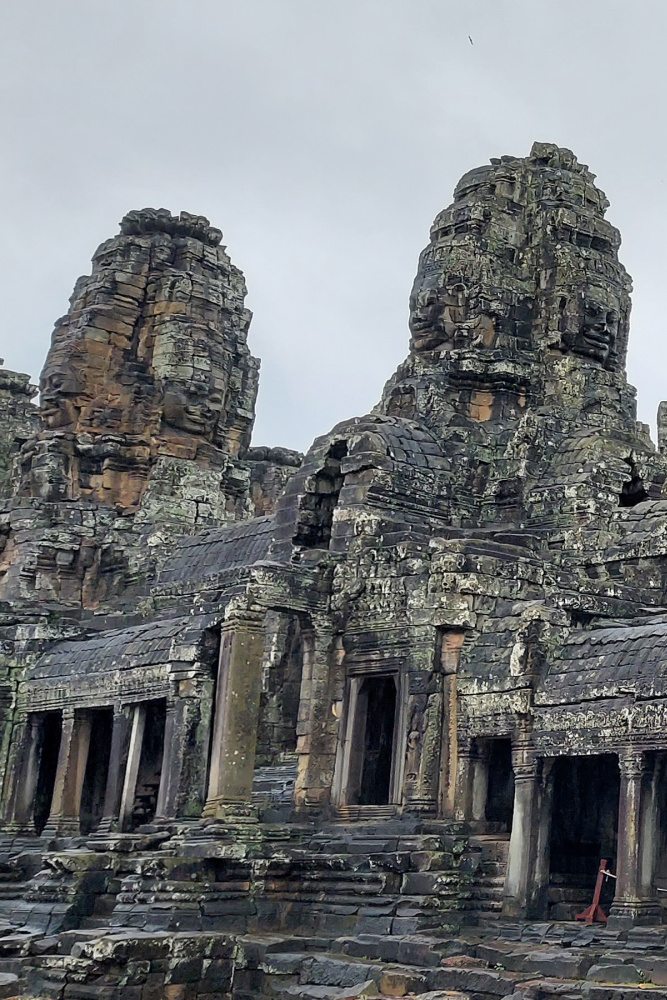
After a restful night, it’s time to dive deeper into the wonders of the Angkor temple complex.
Start your day with a tuk-tuk ride to Bayon Temple, one of Siem Reap’s most iconic and photogenic sites.
Bayon is famous for its 54 towers topped with over 200 serene stone faces, thought to represent either the Bodhisattva Avalokiteshvara or King Jayavarman VII himself.
- Located inside Angkor Thom, the ancient royal city
- Central sanctuary: Bas-reliefs show Khmer daily life and epic battles
- Maze-like layout with narrow corridors and steep staircases — part of the adventure!
Walking through Bayon feels like stepping into a sacred puzzle filled with smiles carved in stone.
Angkor Thom – Cambodia’s Ancient Capital
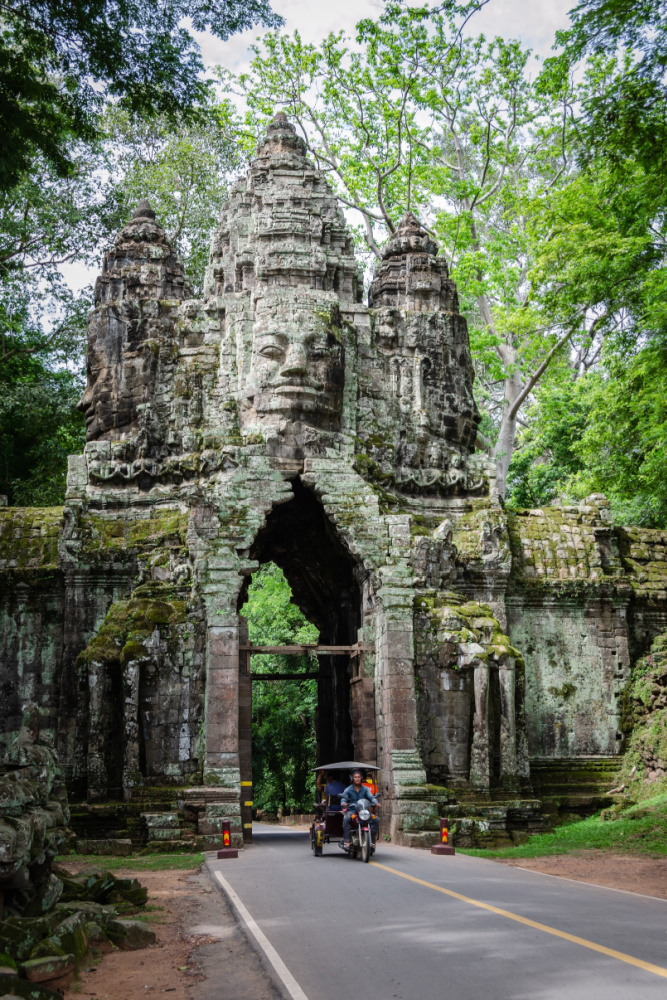
Bayon sits at the heart of Angkor Thom, the last capital of the Khmer Empire.
You’ll pass through majestic gates and tree-lined causeways on your way — it’s more than just temples; it’s a royal city wrapped in jungle.
Make sure to stop by:
- The Victory Gate and South Gate with guardian statues
- The Elephant Terrace and Terrace of the Leper King — full of intricate carvings and royal symbolism
This part of Angkor is often overlooked, but it offers a deeper look into the grandeur of Cambodia’s past.
Lunch Break – Cuisine Wat Damnak
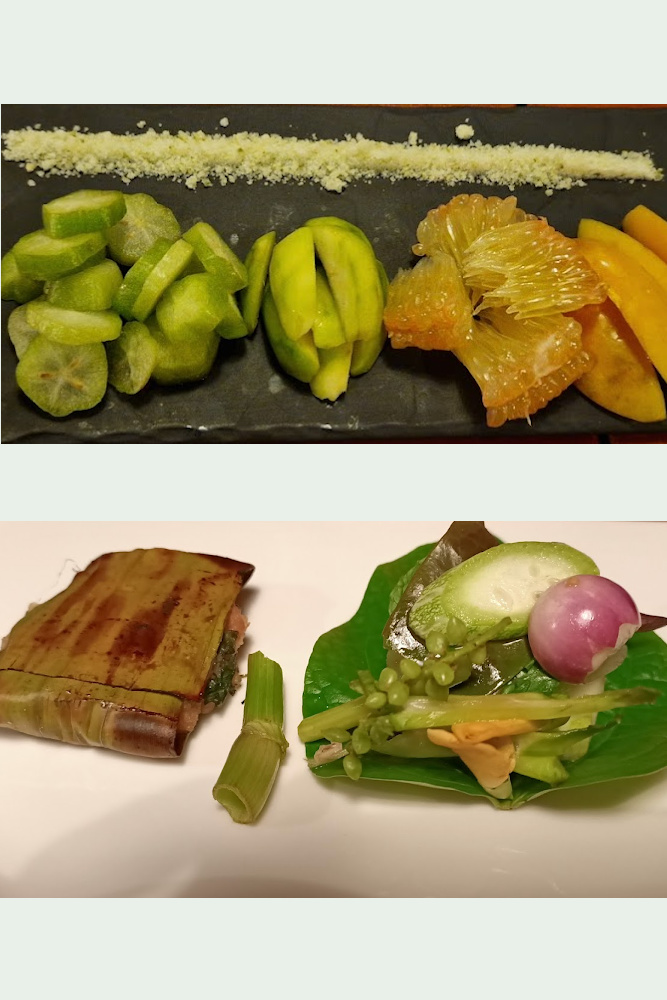
For lunch, head to Cuisine Wat Damnak, a local favorite blending French technique with Cambodian flavors.
We loved the peaceful setting, thoughtful service, and delicious dishes — including plenty of vegan and vegetarian options.
🇫🇷 The French influence here comes from Cambodia’s time in French Indochina, and it shows in the refined yet comforting meals.
It’s a perfect place to cool down, recharge, and savor the creativity of Cambodian cuisine.
Rest and Recharge at Your Hotel
After a hot morning at the temples, take a well-earned midday break.
- Swim in the pool or enjoy a cool drink in the shade
- Upload your temple pics or take a power nap
- Resting during the hottest hours is essential in Siem Reap
Pace is key — and you’ll need your energy for the afternoon adventure!
Visit the Floating Villages on Tonlé Sap Lake
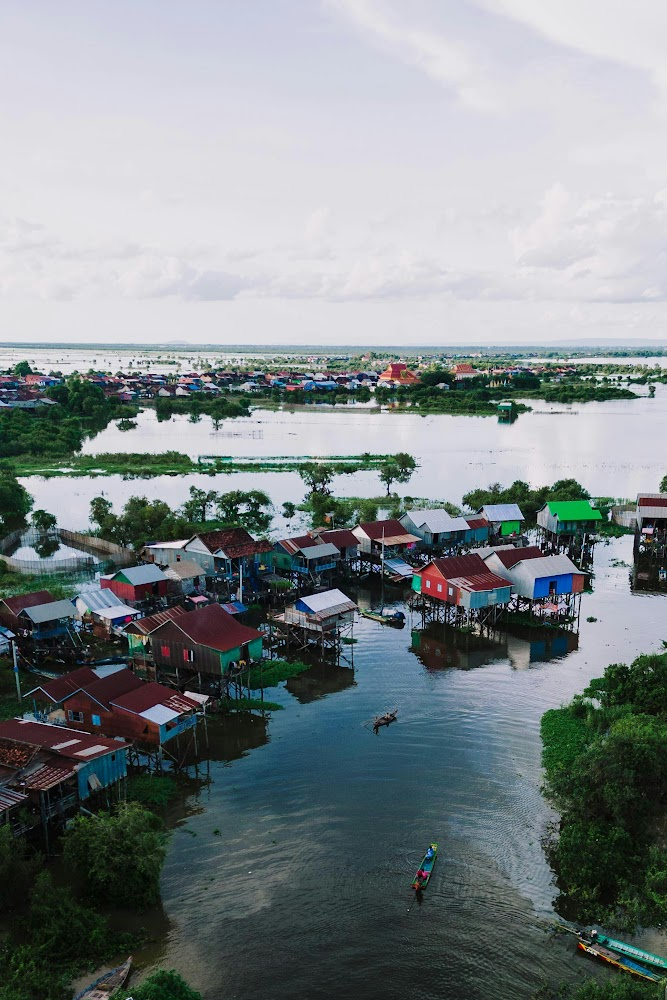
In the afternoon, trade temples for water life with a trip to the floating villages of Tonlé Sap.
- Best reached by car, tours can be arranged via the hotel or a guide
- Take a boat ride through wooden homes and schools built on stilts
- Learn how communities adapt to rising and falling lake levels with the seasons
This side trip shows a different Cambodian heritage — one shaped by water, resilience, and tradition.
Tip: Sunset over Tonlé Sap is stunning, with golden skies reflecting off the water.
Evening: Cocktails at Miss Wong
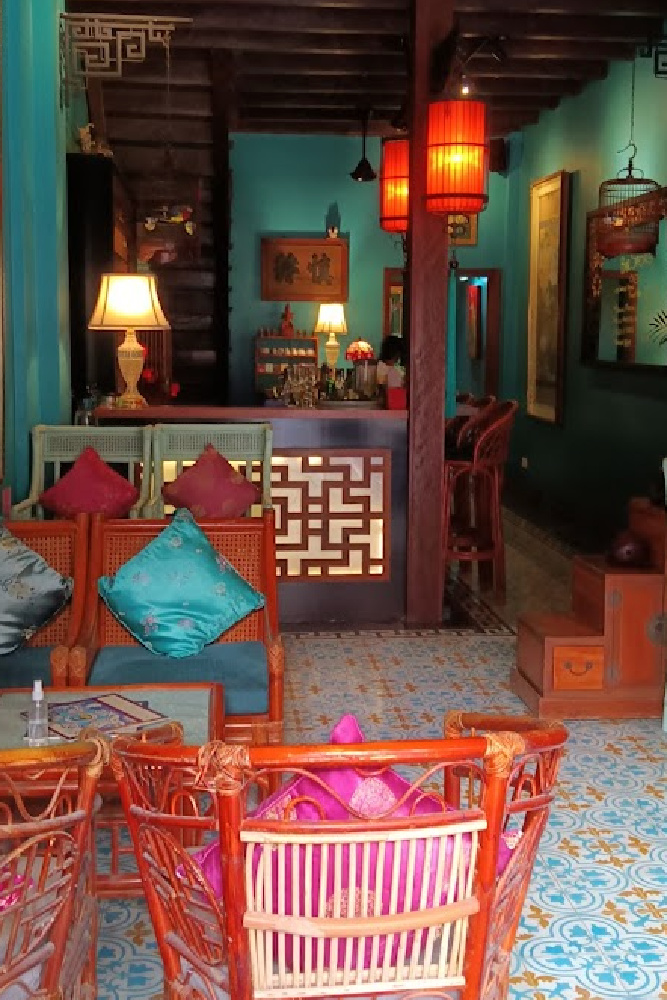
End your day at Miss Wong Cocktail Bar, a stylish hidden gem in Siem Reap.
- 🍹 Try their Khmer-inspired drinks (the lemongrass martini is a must!)
- The vintage Asian decor and soft lighting make it cozy and chic
- Arrive early for a seat by the fan if you’re sensitive to the heat
After a full day of temples and culture, this is the perfect place to slow down, reflect, and toast to your Cambodian journey.
Day 3: Nature + Last Stops in Siem Reap
Morning: Explore Phnom Kulen National Park
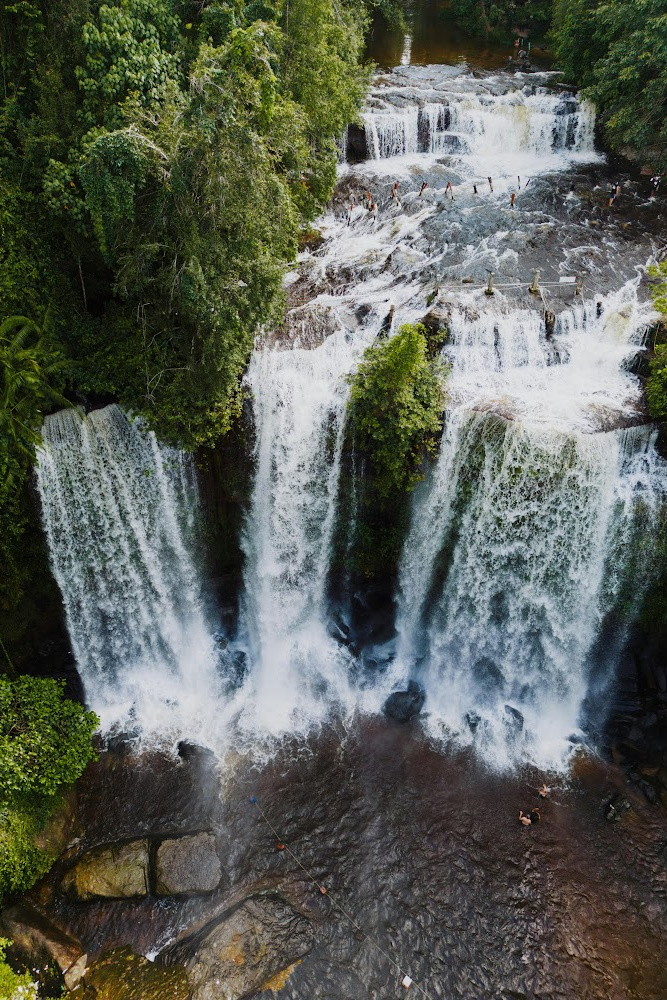
If your flight is in the afternoon, start your final day with a peaceful nature escape to Phnom Kulen, located about 50 km from Siem Reap (1.5–2 hours by car).
This sacred mountain is a favorite day trip for both locals and visitors. It’s believed to be the birthplace of the ancient Khmer Empire.
What to expect:
- Lush jungle trails and cool mountain air
- Waterfalls perfect for a refreshing dip
- The River of a Thousand Lingas — sacred carvings under the water
- Local pagodas and reclining Buddha statues
Tip: Hire a driver through your hotel for the easiest access. Entrance fees apply.
This is a great way to end your Cambodia trip with a dose of nature and serenity before heading back home.
No Time for a Day Trip? Visit Siem Reap’s Local Markets
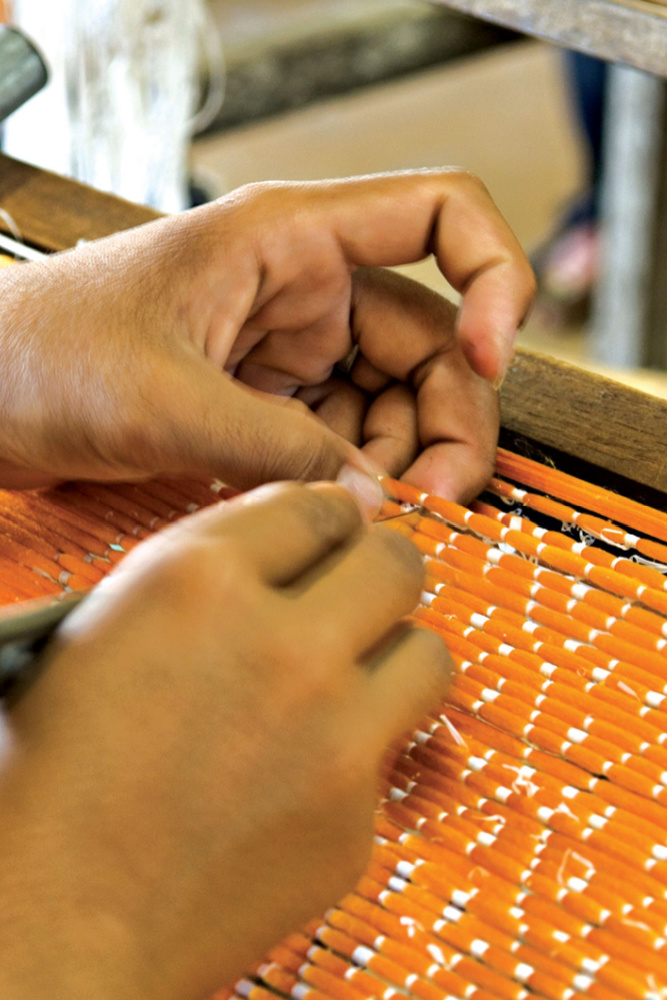
If hiking isn’t your thing, or you’re tight on time, explore Siem Reap’s colorful markets instead.
Local markets are the perfect place to:
- Shop for silk scarves, handmade crafts, spices, and local snacks
- Practice your haggling skills — bargaining is expected!
- Bring small bills in US dollars or Cambodian Riel — most stalls don’t take cards
Markets to check out:
- Old Market (Psar Chaa) – Great for souvenirs and quick eats
- Made in Cambodia Market – Focuses on ethical, locally made goods
- Night Market – Best for an evening stroll and street food finds
You’ll leave with beautiful gifts and a deeper feel for daily life in Siem Reap.
Where to Stay in Siem Reap
Choosing the right accommodation can elevate your Angkor Wat experience. Here are two standout options I stayed at during my trips, each offering a unique combination of comfort and location.
Mane Family Vacation – Peaceful Luxury Outside the City
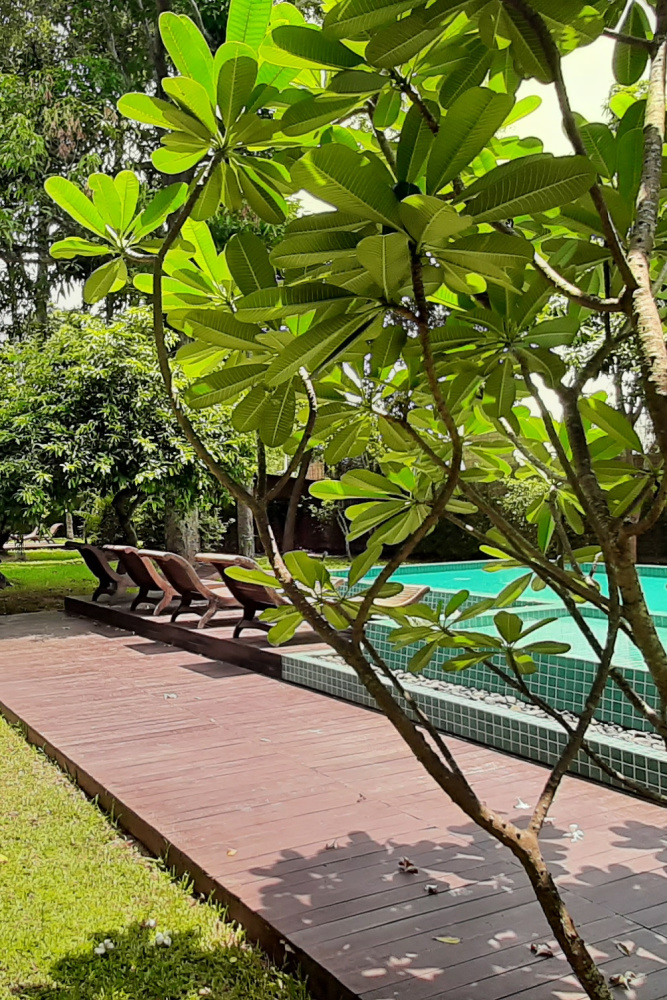
If you’re looking for a tranquil escape with a touch of luxury, Mane Family Vacation is perfect.
- Private pool villa surrounded by lush gardens
- Free bicycles to explore the peaceful surroundings
- Personal butler service made the stay truly memorable
- Breakfast in the villa with fresh fruit and local dishes was a daily highlight
- Spa and on-site restaurant available
This resort is ideal for travelers wanting to disconnect and relax between temple-hopping.
Viroth’s Hotel – Award-Winning Stay in Central Siem Reap
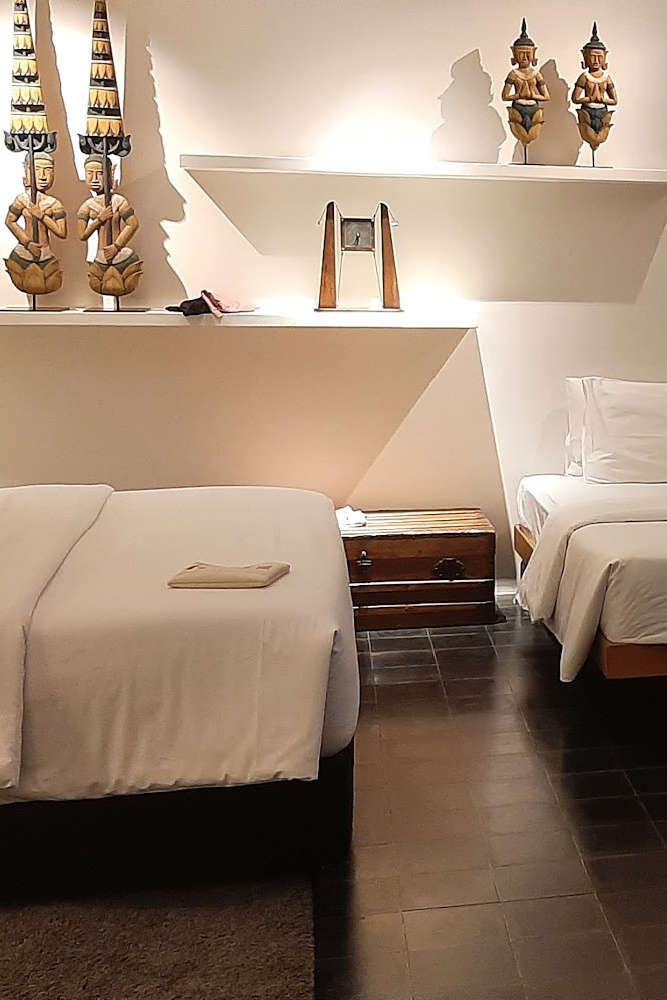
For those who prefer to be in the heart of the action, Viroth’s Hotel is a must.
- Awarded #1 Top Hotel in the World by TripAdvisor in 2020
- Sleek, vintage-inspired design with traditional Khmer touches
- The healthy breakfast was the best I’ve had in Southeast Asia
- Walkable to Siem Reap’s restaurants, markets, and nightlife
- Long pool perfect for a post-temple dip
Whether you’re a solo traveler or visiting as a couple, this hotel offers a perfect balance of style and comfort.
Stylish Airport Pick-Up? Yes, Please
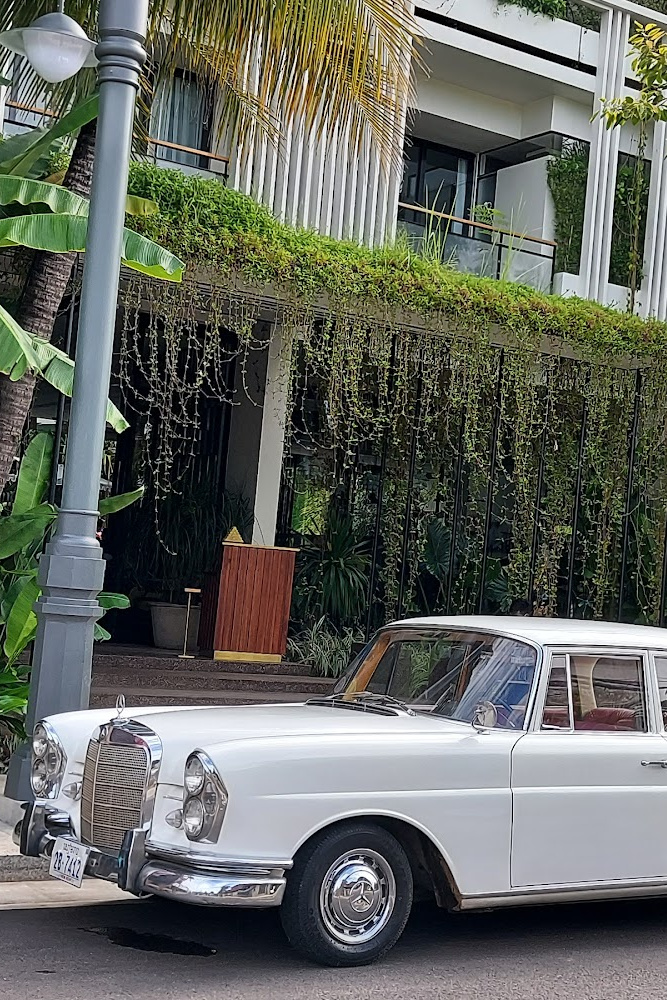
After a long flight, nothing beats being greeted by your hotel.
Viroth’s Hotel offers a classic car airport pick-up service — an extra you’ll love if you want to start your trip in style.
- Impeccably maintained vintage cars
- Smooth and elegant ride to the hotel
- Felt like stepping into a movie scene
This charming touch made our arrival feel extra special — and set the tone for the rest of the trip.
Travel Essentials for Visiting Angkor Wat
Before heading to Siem Reap, ensure you’ve sorted out the basics: your visa, what to wear, local currency, travel insurance, and how to stay connected.
Visa Tips
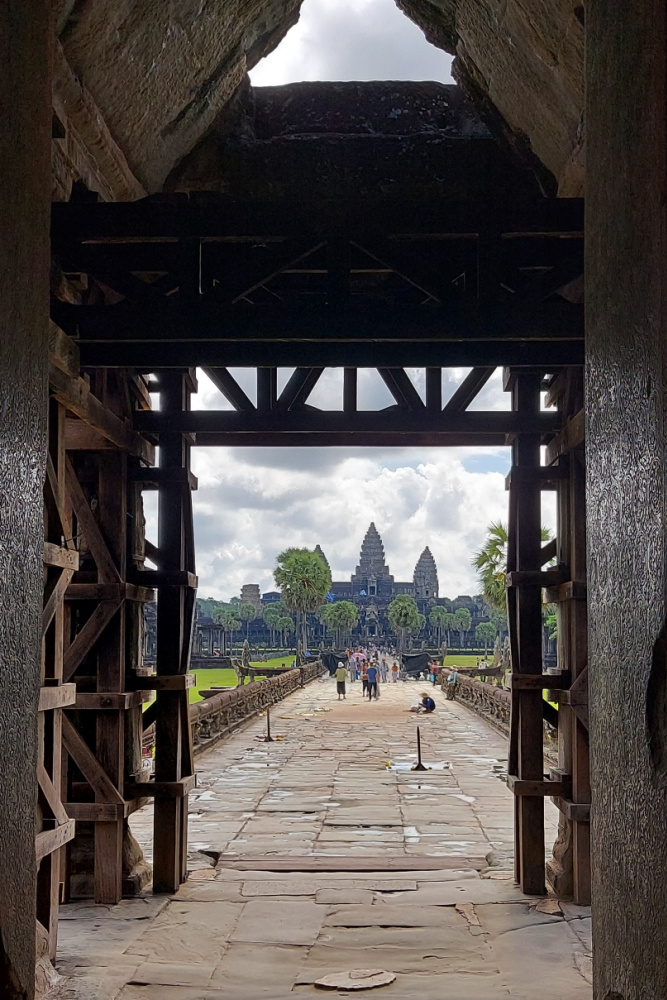
Applying for your Cambodia e-visa is straightforward:
- Apply online at least 10 days before your flight.
- It usually takes 3–5 business days to process.
- Always use the official government site to avoid scams.
- At the time of writing, the e-visa costs $30 plus a $6 processing fee.
I’ve done this process twice with no issues.
What to Pack for Angkor Wat
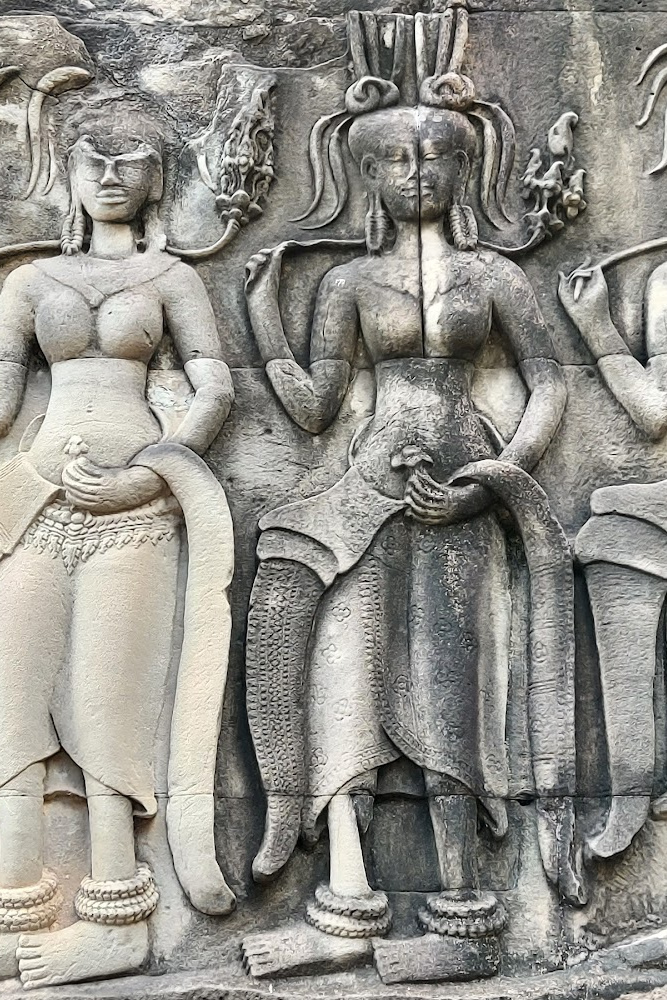
- Bring light, breathable, and comfortable clothing.
- Women must cover their knees and shoulders inside temples — long skirts or trousers and short-sleeved shirts work well.
- For men, knee-length shorts and short sleeves are generally fine.
- A hat, sunglasses, and sunscreen are essential.
- Pack a light raincoat or small umbrella if you’re visiting during the rainy season.
- Comfortable shoes are a must — you’ll walk a lot on uneven ground.
Currency in Cambodia
- Cambodia’s official currency is the Riel, but US dollars are accepted almost everywhere.
- Carry plenty of small bills ($1, $5, and $10). Coins are not used.
- Many places don’t accept cards, especially tuk-tuks and small vendors.
- Double-check your change — it’s often given in a mix of Riel and USD.
Travel Insurance
Travel insurance is a personal choice, but I highly recommend it.
- It covers everything from minor issues like food poisoning to bigger emergencies.
- I use an annual plan for peace of mind.
- Choose a provider in your home country that fits your travel style and needs.
Mobile Data and Connectivity
While most hotels offer Wi-Fi, mobile data helps navigate and stay connected.
- I use the Singtel Ready Roam plan to avoid swapping SIM cards.
- If your carrier doesn’t offer a good plan, buy a local SIM in Cambodia.
- Mobile data helps with maps, translations, restaurant searches, and tuk-tuk bookings.
What Angkor Wat Left Me With
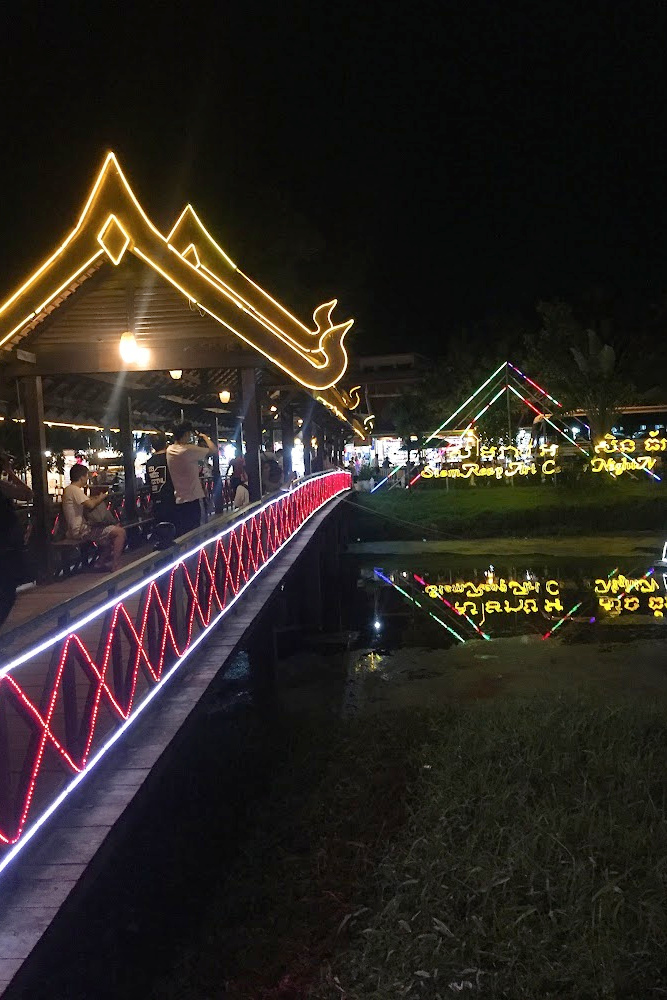
I hope this Angkor Wat itinerary helps you plan an unforgettable trip to Siem Reap. From ancient temples like Bayon and Ta Prohm to flavorful local food, floating villages, and peaceful hotels, there’s something here for every kind of traveler.
On my second visit—right after the pandemic—the temples were almost empty. Walking through Angkor Wat in total quiet was surreal, almost like stepping into another world.
But what truly stayed with me was the warmth of the Cambodian people, who were always welcoming and kind.
Whether you’re a history lover, a nature seeker, or visiting Cambodia for the first time, Angkor Wat’s timeless magic will leave its mark.
Have you been to Siem Reap? If so, please share your favorite memories or tips in the comments below. I’d love to hear them.
Frequently Asked Questions (FAQ)
How many days do you need to visit Angkor Wat?
Most travelers spend 2 to 3 days exploring Angkor Wat and nearby temples. A 3-day pass offers the best flexibility and value.
Can I buy Angkor Wat tickets online?
Yes. Buy your ticket in advance from the official Angkor Enterprise website to skip lines and avoid scams.
What is the dress code for visiting temples in Cambodia?
Both men and women should cover their shoulders and knees. Due to the heat, lightweight, modest clothing is best.
What is the best time to visit Angkor Wat?
November to February offers cooler weather and clearer skies — ideal for sightseeing and photos.
Is Angkor Wat open every day?
Yes, the complex is open daily from 5:00 AM to 5:30 PM. Sunrise visits are popular, so arrive early.
More Asia Travel Itineraries to Inspire Your Next Trip
Little India Singapore: Walking Itinerary, Market, Food & Shops Guide
Chinatown Singapore Self-Guided Walking Tour with Map
Indonesia Travel Itinerary: 7 Days in Sumatra
Pin this post
